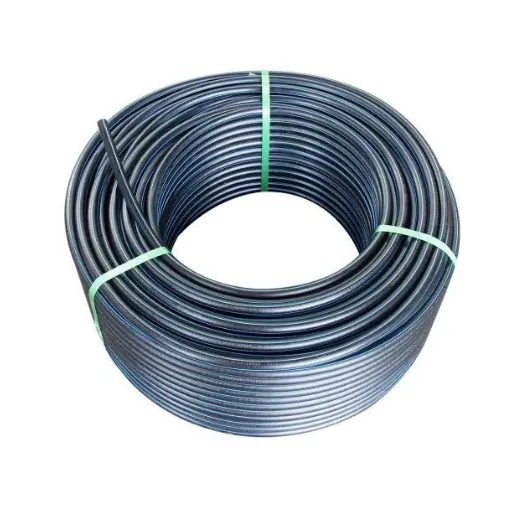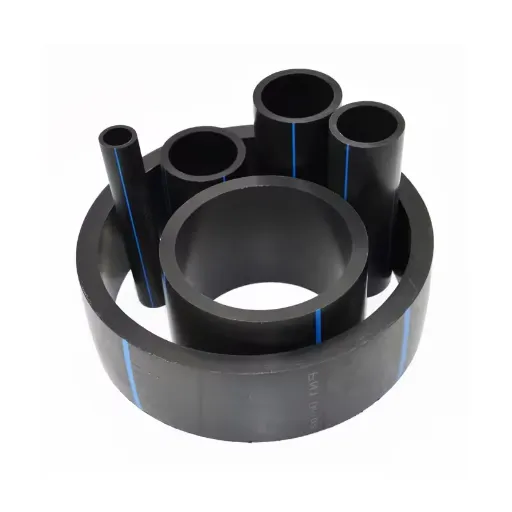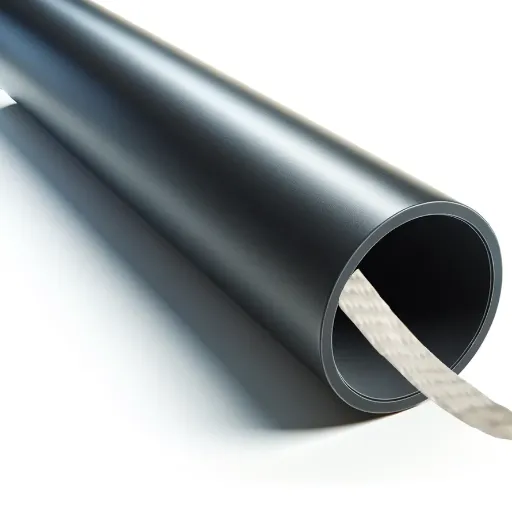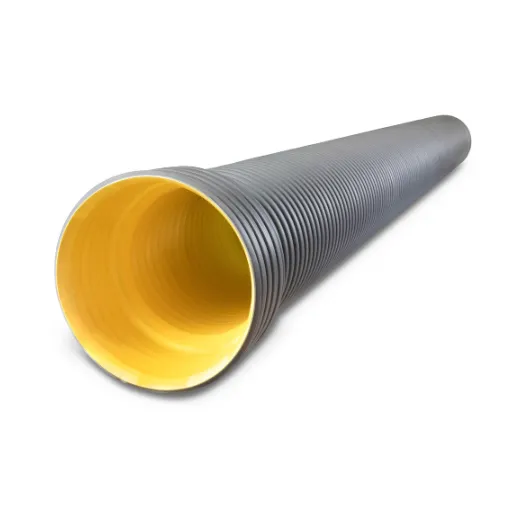Gone are the days with the boring and time-consuming piping industry, thanks to HDPE pipes. It boasts of very strong corrosion resistance and high flexibility. An also very environmentally friendly product can be chosen for almost all applications-from water pipe, gas to industrial applications. But what is it that makes this pipe so special and so versatile? Today, we put a spotlight on HDPE pipes, their unique characteristics, special advantages, and why this type is quickly becoming the piping of choice in place of traditional piping materials. Whether you are all ears in construction, engineering, or just curious, this will open your eyes to how HDPE pipes are helping to shape the future of infrastructure.
Characteristics of HDPE Pipe
Overview of HDPE Material Properties
The Higher-Density Polymer (HDPE) thus is a thermoplastic polymer offering a higher ratio of strength to density. It has a fairly good amount of flexibility, and it resists external stresses well. It imparts high impact resistance, which would be very necessary in harsher conditions. Being referred to as lightweight yet strong, HDPE finds many industrial pipeline usages. It is non-porous with a smooth surface that imparts minimal friction during fluid transport, thereby providing greater efficiency to pipeline systems.
Key Properties: Among the prime features of HDPE are resistance to corrosion and abrasion and the protection it offers when exposed to chemicals. Other than rust or deterioration that comes with the exposure of metal pipes to aggressive chemicals and harsh environment, HDPE does not actually corrode when exposed to relatively unfriendly chemicals or environments, making it an ideal product.
Apart from that, it has excellent resistance to ultraviolet radiation and extreme temperatures, which makes it suitable for underground and outdoor installations. These properties thus enable HDPE pipes to resist structural changes under service loads throughout a long-term period, and can go past 50 years.
Taking HDPE’s flexibility and ductility also into account, there lie notable benefits in installation. It can be bent and turned around curves easily without the help of any fittings or joints, saving time and costs. Through the fusion-welding method on HDPE materials, joints are created from where no leakage is possible; this greatly cuts down water loss in the water distribution network. Because of all these qualities plus durability, resilience, and adaptability, HDPE can cater to modern demands on infrastructure in a cost-effective and eco-sensitive manner.
Resistance to Corrosion and Chemicals
HDPE is highly resistant to corrosion and chemicals, making it perfectly suited for various industrial and environmental applications. Unlike metals and concrete, HDPE does not get degraded when in contact with harsh chemicals like acids, alkalis, and salts. This property lends a very long working life even if exposed to corrosive environments or moisture. For example, HDPE piping systems are widely in use in chemical plants, mining operations, and wastewater treatment plants due to its ability to maintain structural integrity in arduous conditions.
Maintenance Advantage: Being maximally noncorrosive, there is no requisite of protective coatings and cathodic protection or chemical inhibitors that would eventually add to maintenance costs.
Thus, its inner strength would guarantee the reliability of performance within underground installations, underwater infrastructure, and such environments as extremes of pH. Statistically, the previous longevity of HDPE piping and containment systems over the period of 50 years under standard operating conditions has been proved by experience, therefore proving HDPE’s long-term suitability.
Moreover, another aspect of the chemical resistance would relate to interaction with hydrocarbons. Hence it is possible to use the system for fuel transfer and storage. Its low permeability ensures that contamination does not take place, thereby ensuring the purity of the fluid or substance being transported within. By virtue of high corrosion and chemical resistance, HDPE is a viable option for industries looking at assured reliability, reduced maintenance, and environmental safety.
Durability and Longevity of PE Pipe
PE pipes stand for highly durable conditions because of their unique material characteristics and resistance to environmental stressors. PE pipes resist corrosion from moisture, soil content, and chemicals, much unlike most common materials such as metals. This resistance guarantees an enhanced service life, especially in tough situations such as underground layings and corrosive conditions.
The flexibility and strength of PE pipes give them additional longevity characteristics. They can accommodate fluctuations in external pressure and movements on the ground without damage or crack formation. Test and field studies indicate that PE pipes can sustain their integrity for more than 50 years under average working conditions, making these pipes a cost-effective and reliable answer in long-term infrastructural demands. Besides, friction losses in these pipes are low due to their smooth internal surface, resulting in lesser energy requirements for pressurization and flow systems, as well as lesser mechanical wearing with time.
With the addition of UV resistance, PE pipes resist breakdown under sunlight for longer periods so long as adequate stabilizers are compounded into the material. This feature, alongside inertness of PE pipes, prevents degradation from environmental factors, thereby ensuring the compatibility of the pipes with potable water systems. A combination of these factors makes PE pipes perfect for applications requiring sustained performance, minimal maintenance, and rigid standards for safety and the environment.
Fusion Techniques in PE Pipe Installation
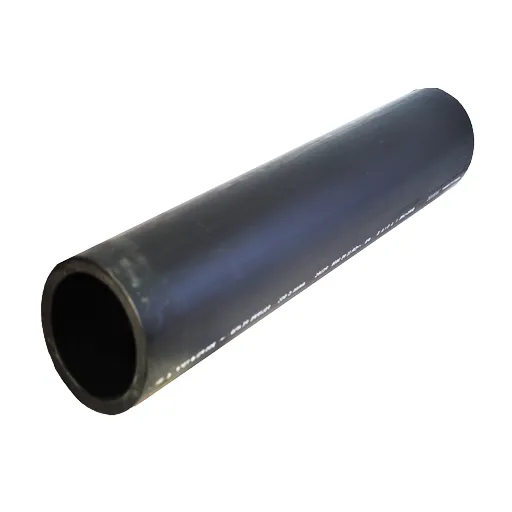
Introduction to Heat Fusion Methods
Heat fusion is an extremely reliable and very commonly used process for joining polyethylene (PE) pipes under pressure and non-pressure situations. In this process, the surfaces of the parts of PE to be joined are heated up to a molten state and then set to controlled force to obtain the weld. In contrast with mechanical joints that work structurally with external seals or gaskets, fusion joints become one and the same with the pipe material, which makes them more resistant to stress and leakage during operation.
Fusion Advantage: Primarily, the heat fusion techniques applied in the industry range through butt fusion, socket fusion, electrofusion, and saddle fusion. Each of these methods will serve a particular set of experiences: a blend of pipe-sizes, materials-temperature grades, or exchange environments.
These methods must be applied keeping in strict respect to acknowledged standards in strictly regulated such as temperature, alignment, and pressure during certain timeframes of cooling, and at the acupuncture of ASTM F2620 or ISO 21307. These allow the joints to perform for a very long time under applications of varying pressures and temperatures.
Moreover, in our contemporary world, these Internet-powered things have automated fusion machines with integrated data-logging systems that ensure precise and traceable PE pipe installation. Such monitoring within a set limit must occur in real-time, keeping human factors away from error and ensuring the integrity of such joints. When correctly applied, heat fusion joints are stronger than those of the parent pipe and hence extremely reliable in demanding applications like those in municipal water systems, gas distribution, and the industrial process realm.
Types of Fusion for HDPE Pipe
The methods employed for fusion play a very important role in the longevity and strength of a pipeline system. Here are the most commonly used fusion methods:
1. Butt Fusion Method
The butt fusion method is the most common method of joining HDPE pipes. The heat is allowed to touch the ends of the pipes to a molten state before pressing them together under controlled pressure so that the materials weld as they cool. The butt fusion joint is highly regarded for its strength and durability, in many cases greater than the tensile strength of the pipe itself. The method is suitable for pipes of the same diameter and wall thickness, and modern butt fusion machines incorporate the data-logging feature to provide traceability for the process and to comply with industry standards.
2. Electrofusion
Electrofusion uses specialized fittings with embedded metal coils that heat upon the passage of current. The pipe ends are inserted into the fitting, and the heat from the coils melts together the material of the pipe and the fitting to form a strong, uniform joint. This method finds application especially in confined spaces and for repair works on existing pipelines. Electrofusion is more for smaller diameters and for circumstances where precise control of joint integrity is required. The leak-proof joints formed by it have been so useful that they are commonly used in gas distribution and water transport networks.
3. Socket Fusion
Socket fusion involves inserting the pipe end into a heated socket or coupling. This type of fusion is used for smaller pipe sizes, requiring fewer equipments and tools in comparison to other fusion processes. It is a simple method and ideal for applications demanding precision in alignment and strength, such as plumbing and residential water systems. Socket fusion is very efficient for joints with negligible external stresses.
4. Saddle Fusion
The saddle fusion process is utilized for attaching a branch connection to the main pipeline, frequently in T-joint configurations. This technique involves heating both the saddle fitting and the main pipe surface until molten and bringing the two surfaces together under pressure. Although the saddle fusion uses special tools, it is indispensable for creating branch connections in pressurized systems such as gas and water networks.
From severe industrial to residential utilities, these various fusion methods allow HDPE pipeline systems to satisfy particular application requirements. The proper method depends on such aspects as pipe size, operational ambience, and end application. Further enhancements in fusion equipment have improved these methods in terms of precision, efficiency, and documentation, thereby meeting the performance and safety criteria set forth.
Best Practices for Successful Fusion
For optimum HDPE pipe fusion results, it is important to practice ideal standards to minimize defect occurrence and allow for strong performance. The first primary step is to inspect fusion equipment for any damages, check its calibration, and make sure that all the components, like the heating plates and clamps, are operating as intended. The fusion area should then be cleaned off of contaminants such as dirt, grease, or moisture, as these would affect the joint quality.
Temperature Control: Temperature control is paramount, with heat being applied equally across the pipe surfaces to achieve proper melt-patterning. Industry standards recommend the heater plate be kept at specified temperature ranges, usually between 400°F and 450°F, depending on pipe material and thickness.
Any misalignment of pipes during fusion results in weak or incomplete joints. Thus, alignment must be given the utmost importance. Alignment tools such as hydraulic fusion machines are second to none when it comes to precise alignments.
Fusion pressures, duration, and other are equally vital. In all pressure applications, operators should see to it that prescribed pressure values are observed, with strict adherence to heating and cooling times so as not to underheat or overheat the material. The welding process must be documented with data logging equipment to ensure traceability. This allows the operator to confirm that all steps were performed according to set standards of procedure for the safety and performance of the finished product.
These additional practices lengthen the life of the pipeline system and preserve its integrity, also satisfying the calling for compliance with ASTM F2620 and other industry codes, plus regulatory and operational requirements. Above all, it is the constant application of these standards through frequent training and certification of personnel, culminating in the strengthening of a culture built on technical excellence with respect to fusion operations.
Cost Savings with HDPE Pipe Systems
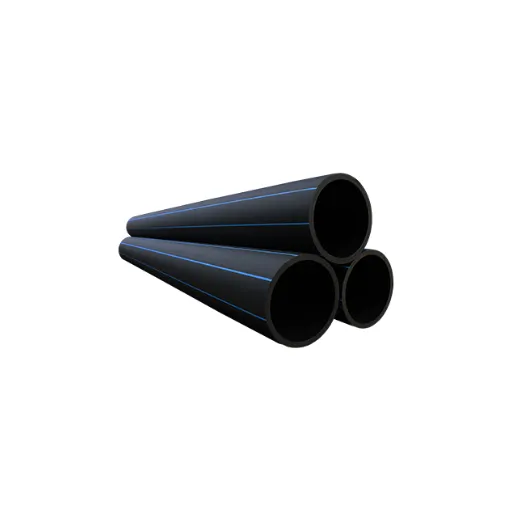
Initial Investment vs. Long-Term Savings
Being HDPE pipes in order to have initial higher costs, but they offer the long-term saving of maintenance, less durability in installation times, and operation.
| Key Point | Initial Cost | Long-Term Savings |
|---|---|---|
| Material | High | Durable, corrosion-resistant |
| Installation | Costly | Quick, flexible, low labor |
| Maintenance | Minimal | Rare repairs, long lifespan |
| Efficiency | Energy-saving | Smooth flow, leak-free |
| Lifespan | 50+ years | Fewer replacements |
| Environmental | Sustainable | Recyclable, eco-friendly |
Maintenance Costs of HDPE vs. Other Materials
Due to corrosion-resistance characteristics of HDPE pipes, they are much more durable and, hence, require less repair, implying lower maintenance costs than steel, concrete, and PVC pipes.
| Key Point | HDPE | Steel | Concrete | PVC |
|---|---|---|---|---|
| Corrosion | Resistant | Prone | Prone | Resistant |
| Durability | High | Moderate | Moderate | Moderate |
| Repairs | Rare | Frequent | Frequent | Occasional |
| Lifespan | 50+ years | 40-50 years | 30-50 years | 20-50 years |
| Maintenance | Minimal | High | High | Moderate |
| Cost | Low | High | High | Moderate |
Impact on Project Budgets
At the start of a project, pipe materials are considered, and setting budgets are influenced by differences in the procurement, installation, and maintenance of the same. A more detailed analysis reveals five cost factors highly influencing the overall budget:
- Acquisition Costs: HDPE pipes are inexpensive besides steel and concrete alternatives in procurement. This decreases upfront costs. For example, in terms of costs per linear foot, HDPE is usually 20-30% less costly than steel or concrete.
- Installation Efficiency: Due to its characteristic light weight, HDPE material simply gets transported and installed, reducing heavy labor-related costs and the equipment required for installation. Given the weighty nature of steel and concrete, special equipment for handling might be required, which adds on to the installation costs.
- Maintenance Charges: HDPE pipes require very few repairs, and since these stays in place for a very long period of time, maintenance cost drops sharply. Steel pipes would require frequent repairs due to rust or joint problems, mounting the cumulative expenses of the project.
- Contributing to Service Life: The lifespan of over 50 years will ensure to be used for a more extended period without recurrent replacement costs on HDPE. The lesser lifespan of materials like PVC (20-50 years) usually makes projects bear replacement expenses that keep adding up.
- Corrosion Management Costs: While steel and concrete pipes need some kind of treatment or protective coating to prevent corrosion, HDPE is inherently corrosion resistant and, hence, totally nullifies the extra cost of ensuring durability.
Conclusion: Willed by the analysis of these factors is an appreciation that HDPE offers the most cost-effective option in terms of long-term infrastructure, with budgetary savings made featureful through lesser operational expenditure over time.
Applications of Polyethylene Pipe
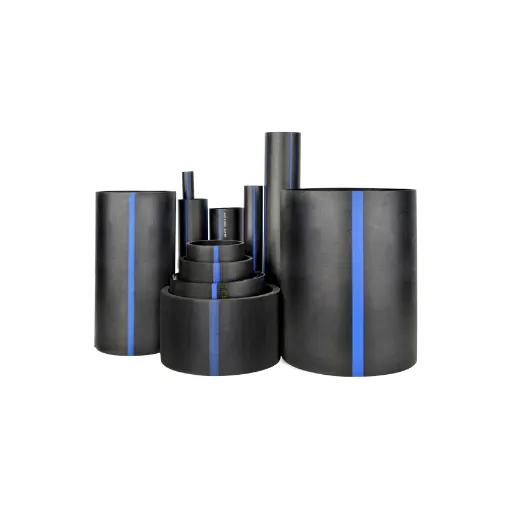
Water Distribution Systems
Given their robust strength, flexibility, and resistance to environmental assaults, HDPE pipes have been much-and-for-side with water supply systems. Some of the applications of HDPE in water distribution systems are:
- Municipal Water Supply Systems: HDPE pipes find greater use in municipal water systems whereby they have to carry water for human consumption. Being joined in a manner that is leak-proof, the pipes ensure minimum water loss, often with leakage rates of less than 10% in new pipe installations, as compared to 20-30% leakage in traditional systems with older pipe materials.
- Rural and Agricultural Water Distribution: For irrigation in agricultural areas, HDPE pipes distribute water efficiently across large distances. Being able to withstand severe pressures and UV radiation, the pipes are perfect for laying exposed pipelines in remote or harsh environments.
- Industrial Water Transport: Industries depend on HDPE for transporting process water and cooling water because it can stand up to temperatures ranging generally from -40°F to 140°F without cracking or degrading.
- Storm Water Drainage: Being increasingly used for stormwater drainage due to their durability and large flows capacity, HDPE pipes would rather be light and hence get installed very fast at reduced labor charges.
- Emergency Water Supply Systems: HDPE is preferred in the temporary or emergency water supply arrangements because of its great portability and ease of installation. Designing it with a lot of flexibility allows it to be rolled, which lessens the issues during logistics in urgent deployments.
These are just a few examples showing how HDPE caters to the wide-ranging requirements of water distribution systems in terms of efficient, cost-effective, and resilient scenarios.
Geothermal Applications of HDPE
High-density polyethylene plays a critical role across geothermal systems because of the material specifications that equip it with very high durability and flexibility and in thermal stability, unlike any other. This particular property makes HDPE an excellent candidate for thermal conduction and system longevity in geothermal applications. Below is a list detailing five key geothermal applications for HDPE pipes:
1. Ground Source Heat Pump Systems
HDPE pipes find wide application in ground source heat pump systems. The pipes run underground to transmit heat transfer fluid, with their capacity to resist corrosion forming the best barrier against damage, while other pipes tend to degrade. Studies indicate that HDPE piping withstands temperatures between -40°F and 140°F, thereby giving good performance depending on geological conditions.
2. Vertical Closed-Loop Installations
Pipes in vertical closed-loop systems must mostly be designed to withstand high pressures due to depth. HDPE pipes fit the bill with pressure ratings of up to 335 psi, depending on pipe size and wall thickness. This increases the assurance of working without fail and decreases the probability of pipe degradation with time in vertical applications.
3. Horizontal Closed-Loop Systems
Geothermal systems are preferrable systems with tubing because they give bending allowance, which eases installation in shallow trenches. The material allows easy handling and coiling, thus reducing labor and equipment costs. Besides, the lower thermal conductivity of HDPE helps save energy by minimizing heat loss to the surrounding soil.
4. Direct Exchange Systems
Cooling lines benefit in the direct exhange system through the very high heat conductivity and chemical resistance rendered by HDPE. The pipe material is inert and does not allow contamination to occur from the circulating refrigerant to the surrounding atmosphere while ensuring efficient transfer of thermal energy.
5. Thermal Energy Distribution
HDPE pipes are basically used in large geothermal energy networks for transporting the thermal energy between buildings or systems. High durability of the material reduces maintenance costs while resistant to UV degradation provides for the best aboveground piping connecting the geothermal pumps.
This highlights HDPE being applied in geothermal technologies as an energy-efficient, cost-saving social-agronomic technology for modern energy.
Industrial Uses of PE Pipe
Because polyethylene (PE) pipes are highly flexible yet resilient to chemicals, and cost-efficient, they come well in many applications. Five major industrial applications of PE pipes are presented below, depicting their versatility and efficacy:
- Water Transmission Systems: PE pipes find wide usage in industrial and municipal water transmission systems. Being corrosion-resistant with a long life span, they are suitable for the conveyance of both potable and non-potable water. The studies reveal that PE pipes could have a life of more than 50 years under normal working conditions, thus minimizing downtime and costs involved in replacements.
- Gas Distribution: Flexibility, resistance to cracking, PE pipes are the best for natural gas distribution. For example, in North America, PE pipes constitute well over 90 percent of new gas distribution systems, owing to their safety and reliability, thereby reducing maintenance drastically when compared to other materials like steel.
- Chemical Processing and Transport: Being resistant to many chemicals, PE pipes can be used to transport acids, alkalis, and chemical wastes in industrial processes. Since they are chemically inert, there are minimal chances of contamination, degradation, or etching of the pipes-a critical factor in petrochemical refining and pharmaceutical industries.
- Agricultural Irrigation Systems: PE pipes are a major component of irrigation systems and are used for drip and sprinkler irrigation in modern agriculture. The pipes’ features of being lightweight, easy to join, and convenient for quick assembling and reassembling are all useful in extensive farmlands. They also resist UV rays, which makes them very durable under tough outdoor conditions.
- Use in Mining: Mining processes require PE pipes for carrying slurry, tailings, and process water. With abrasion resistance and the ability to withstand high pressures, PE pipe ensures the operating efficiency of highly demanding environments. Mining studies have reported a drastic reduction in pipeline replacement when using PE instead of conventional materials.
These acoustic properties of each application stand out for their physical and chemical excellence and speak of the importance these PE pipes hold for industrial systems all over the world.
Benefits of Using HDPE Pipe
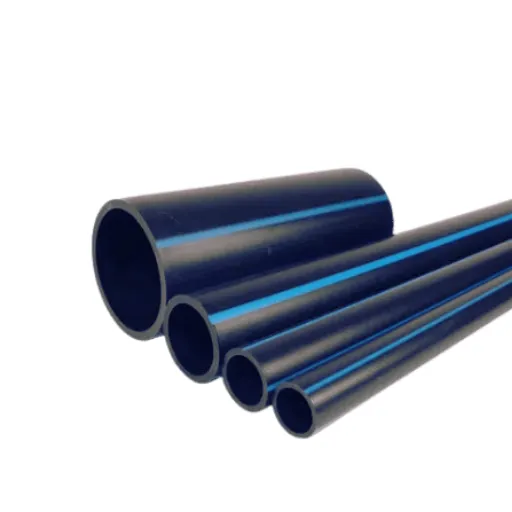
Environmental Benefits of PE
- Recycle-ability: PE (Polyethylene) is a totally recyclable material, thereby greatly enhancing waste reduction. PE pipes can be reclaimed at the end of their service life and reprocessed into other products; this, in turn, promotes the circular economy. Several reports have indicated that recycled PE material may save anywhere from 25 to 30% of the energy required by new PE material.
- Low Carbon Footprint: Being a product of PE, the pipes have less carbon footprint till production and transportation compared to traditional materials like steel or concrete. Life cycle analyses reveal PE pipes may generate up to 35% less carbon dioxide emissions in manufacturing and installation processes.
- Energy Efficient: Being lightweight, PE requires less energy in the processes of manufacturing, transportation, and installation. The smooth inner surface of PE pipes reduces friction losses, further saving up to 30% energy consumption in fluid transportation.
- Non-Toxic and Environment-Friendly: PE is a chemically stable material, which means it doesn’t corrode or leach harmful substances into the environment. Therefore, PE pipe is suitable for potable water applications and does not cause any soil or groundwater contamination.
- Longer Life and Low Resource Use: Having a life of 50-100 years under normal conditions, PE pipes are seldom replaced, unlike those of concrete. This extended durability therefore reduces the need for raw materials to be extracted or for materials to be submitted to landfill, thus conserving the natural resources over time.
Enhanced Safety Features
Polyethylene (PE) pipes provide a few very sophisticated safety features that prove to be sufficiently critical to warrant being chosen in a number of applications. These are intended for holding the integrity of the systems, protecting public health, and providing operational reliability. Here are some main safety features of PE pipes:
Resisting External Impacts: They are highly resistant to external impact and mechanical stress. This drastically reduces the possibility of a catastrophic failure from the outside. Testing shows that pipes of PE, if subjected to pressure surges or ad hoc overloading, will not generally break, enhancing their application in safety-critical operations.
Leakage-Proof Jointing Systems: PE pipes have the unique advantage of secure fusion welding, including butt fusion and electrofusion, forming a homogenized joint with no chance of leaks. This prevents the loss of fluid or contamination in potable water systems or pipelines carrying hazardous materials.
Are corrosion free: Such pipes unlike their metal alternatives do not corrode when exposed to a wide range of chemicals or corrosive environments. Thus, the pipe material will maintain its structural integrity over the decades, reducing any risk associated with pipe deterioration or failure of the entire system.
High Flexibility and Stress Tolerance: Being highly flexible, PE pipes can accommodate ground movements generated by seismic activity, thereby eliminating pipe rupture due to ground motion. They perform well even in difficult terrains or during natural calamities.
Low Flammability Characteristics: Although PE is combustible, it has a relatively high ignition temperature when compared with most other thermoplastics. It also does not sustain combustion very readily, thus reducing concerns with respect to fire safety, especially in an industrial and residential environment.
The combination of all these characteristics imparts on PE pipes the reliability, durability, and safety needed for working under various operating conditions.
Flexibility and Customization Options
Polyethylene (PE) pipes are highly versatile, offering superior flexibility and a wide range of customization options to suit specific project needs. The inherent flexibility of PE pipes enables them to bend without breaking, which is particularly advantageous in installations requiring adjustments to follow curved or uneven terrains. This flexibility minimizes the need for additional fittings, lowering both installation time and associated costs, while ensuring seamless operation over the pipe’s lifespan.
Customization possibilities further enhance the utility of PE pipes. Manufacturers can produce these pipes in various diameters, wall thicknesses, and lengths, accommodating diverse applications from water distribution to industrial fluid transport. Additionally, specialized features such as co-extruded layers for enhanced protection, color-coding for easy identification, and pre-installed fittings can be integrated to meet precise requirements. These options ensure that each pipe is tailored to deliver optimal performance in its intended environment.
From a practical perspective, the combination of flexibility and design adaptability makes PE pipes a highly efficient solution for modern infrastructure challenges. Their ability to adhere to rigorous engineering standards while adapting to specific projects underscores their indispensability across multiple industries. This level of customization and functional reliability sets PE pipes apart as a preferred material in both simple and complex systems, making them an indispensable component for long-term success.
References
- Bowling Green State University: Developed Pipe Bursting Specifications Using High Density Poly Ethylene (HDPE) – Discusses specifications and performance of HDPE pipes in pipe bursting applications.
- University of Kansas: Analyzing field performance of steel-reinforced HDPE (SRHDPE) pipes during installation and under traffic loading – Examines the performance of HDPE and steel-reinforced HDPE pipes under various conditions.
- University of Texas at Arlington: Experimental investigation of the behavior of the steel reinforced high density polyethylene and corrugated metal pipe – Explores the behavior and advantages of steel-reinforced HDPE pipes.
- Ohio University: Evaluation of the geometry effect of the profile of high density polyethylene pipes – Investigates the structural behavior of HDPE pipes using finite element analysis.
- University of Kansas: Laboratory and field performance of buried steel-reinforced high density polyethylene (SRHDPE) pipes in a ditch condition under a shallow cover – Compares HDPE, SRHDPE, and corrugated steel pipes in field conditions.
Frequently Asked Questions (FAQ)
Q: What is a polyethylene pipe of HDPE?
A: An HDPE pipe, also called high-density polyethylene pipe, is a kind of plastic pipe, stronger, stiffer, flexible, and worthy of its name. High-density polyethylene pipe finds application in basically water transportation and geothermal piping.
Q: List the merit of HDPE pipes.
A: There are essentially corrosion-free, lightweight, flexible, and leak-proof. They are thus environmentally friendly and very efficient in transport of drinking water.
Q: What are the applications of HDPE pipes in drinking water supply?
A: They are used in supply lines for drinking water, due to their resistance to chemicals and ability to maintain water quality. They comply with ASTM D3350 and are available in a variety of pipe dimensions and unit weights.
Q: What are the common applications of HDPE polyethylene pipe?
A: Common applications of HDPE polyethylene pipe include water supply systems, irrigation, geothermal piping, and industrial applications. Its versatility makes it a preferred choice for both residential and commercial projects.
Q: How is HDPE pipe joined to fittings?
A: HDPE pipe is joined by means of fully restrained joining systems that are secure in nature. Polyethylene fittings are normally set up to create leak-proof connections that stand water hammer and pressure variations.
Q: What is the significance of carbon black in HDPE pipes?
A: Carbon black is added to HDPE pipes for enhancing their UV resistance and preventing degradation due to sunlight exposure. Such a feature is vital for outdoor applications where prolonged exposure to the elements occurs.
Q: Can HDPE pipes be used in directional drilling?
A: Yes, because HDPE pipes can be bent and can resist bending externally, they are well-suited for directional drilling. They can thereby endure severe situations encountered underground.
Q: What advantage does pipe flexibility give to installation?
A: The flexibility of HDPE pipe makes it easier to handle and install in tighter areas. It can adapt to different bending radii to suit the layout efficiently. This also minimizes damage to the pipe during installation.
This comprehensive guide demonstrates why HDPE pipes are becoming the preferred choice for modern infrastructure projects across multiple industries and applications.



